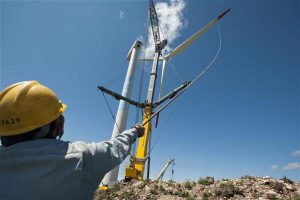As China’s policymakers mull the contents of the country’s next Five-Year Plan, chinadialogue has been asking a range of contributors what they would like to see in the development blueprint. Senior WWF researcher Deng Liangchun gives his viewpoint.
China’s energy development faces two major constraints during the 13th Five-Year Plan period from 2016 to 2020. The first is energy security: China is ever more reliant on oil imports, but the international situation, notably in the Middle East, North Africa, the South China Sea and the East China Sea, is unpredictable. Meanwhile, strategic energy partnerships with Russia and Central Asian nations are still being formed.
The second constraint is environmental – China’s current energy structure produces pollution and greenhouse-gas emissions.
These two factors, combined with the country’s solid foundation in renewable energy, could trigger a mid- to long-term renewable energy revolution in China.
China’s 13th Five-Year Plan is expected to extend energy intensity and total energy-consumption targets as part of a roadmap to 2020. New factors will be taken into account: China’s economic improvement, new urbanisation plans, the challenges of dealing with air pollution and climate change, and water constraints. The 13th Five-Year Plan will also influence China’s new blueprint for medium and long-term energy development, particularly up to 2030.
Energy reform will also be important; progress is hoped for in the electricity-generating sector, in price-setting mechanisms, and in efficient and environmentally friendly pricing and taxation systems.
More specifically, total coal-consumption targets and a reduction in coal’s importance in the primary energy mix will be important parts of the plan. The government is likely to require the amount of coal in the energy mix to drop to 60% or below, equal to a drop of one percentage point a year, starting now. An absolute cap on coal consumption is also anticipated. Specific programmes for nuclear power and non-conventional natural gas, which will be important sources of growth, are expected.
There will also be specific plans for renewable energy. Alongside targets and policies for hydropower, wind power, solar power and biopower, surveying and developing geothermal power may also be encouraged.
The direction of 13th Five-Year Plan targets for renewable and non-fossil energy is already determined: a steady increase in the importance of renewable energy in the primary energy make-up, reaching 15% in 2020. Under energy industry plans to deal with atmospheric pollution, that figure needs to reach 13% in 2017.
China’s 13th Five-Year Plan also needs to bring down costs of solar and wind power and allow scaled implementation. In particular, these questions need to be answered: can solar PV be supplied to the grid at a fair price by 2020? What subsidies and financial policies are needed for healthy development of the renewables sector? How should energy and electricity reforms account for larger-scale use of renewables? How can renewables and fossil fuels compete fairly? And how can energy reform promote technological innovation, lower prices and wider use for renewables?







